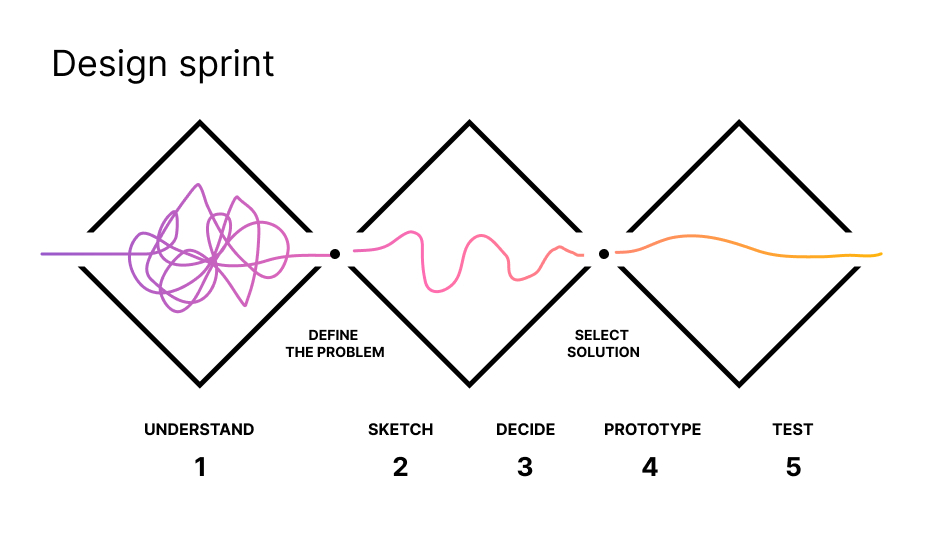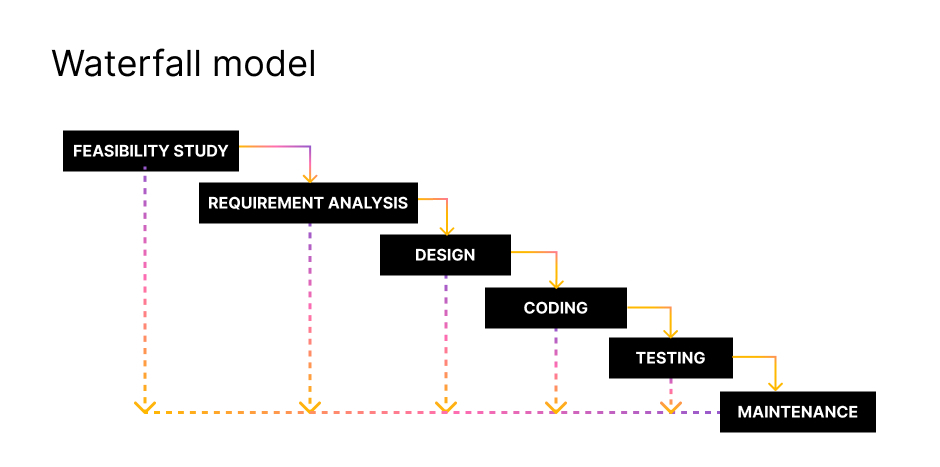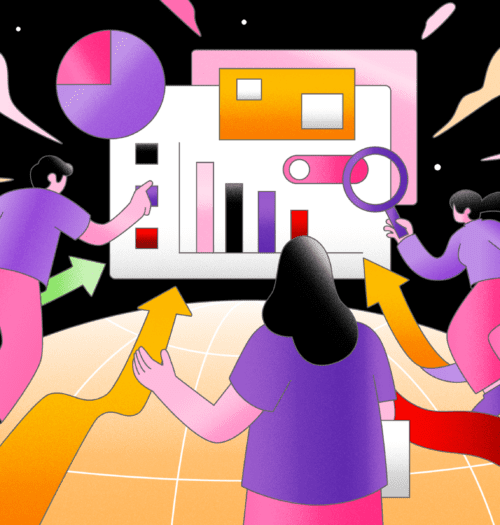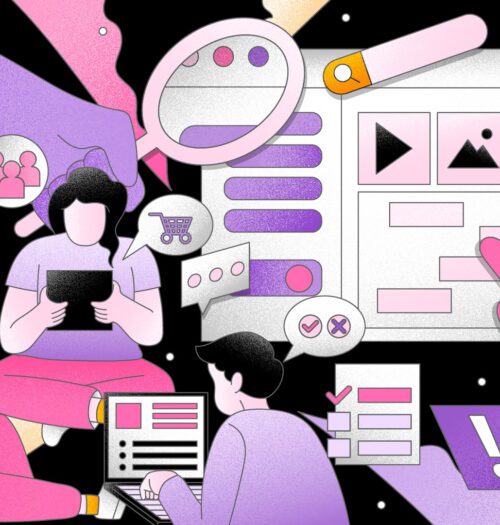🎁 Free 30-day publishing fees on Pay-As-You-GO. Get 15% off when recruiting from the UserQ Panel, with code HELLO15

The impact of user testing on iterative product design
According to Clayton Christensen, a professor at Harvard Business School, nearly 30,000 new products are introduced each year, and 95% fail. If you don’t want to be part of the 95%, you will need user testing before your next product launch. Why?
User testing is an indispensable part of the product design process, playing a critical role in ensuring that a product meets the needs and expectations of its target audience. It is also the foundation of iterative usability testing, where user feedback drives continuous improvements to the design. User testing helps product teams define and refine a product not only during the design and development stage but also after launch.
If you don’t validate your design decisions and do your due diligence starting from research and user design testing, you might end up launching a product that does not align with the user’s needs and expectations, unavoidably missing the anticipated business results. To avoid that, it’s crucial to focus on your final users from the early stages and implement user testing in each phase of iteration in UX design.
A product team can choose between various well-known methodologies to roll out a product, most of which nowadays are focused on a user-centered approach and support user testing throughout the different phases. Let’s have a look at some of the methodologies:
Design thinking and Lean UX entirely rotate around the user’s input, allowing product teams to co-create an artifact along with the final audience that will be using that specific product or service.

Design thinking
Design sprints and Agile development, while all user-centric methods, focus more on quick testing and recurrent iteration in UX design fed by user feedback, supporting the adoption of qualitative and quantitative research from the concept design throughout the product development.

Design sprint steps
On the contrary, some more business-centric methodologies, such as Six Sigma or the outdated Waterfall, do not directly take into account user feedback within the product development stage, increasing the risk of launching a product that “no one wants.”

Waterfall methodology
Within every user-centric method, iterative usability testing can help product owners, designers, and marketers in different ways, starting from better understanding their audience to, for example, providing precise usability feedback about a responsive interface.
As a product manager, your goal should be to maximise the benefits of user design testing in your organisation, reducing all the risks related to the launch of a new product or feature.
The Role and benefits of user testing in product design
Testing your idea, MVP, or product with real users can help the product team with these aspects:
Validate design concepts & decisions
Validating design concepts and decisions can be a game-changer for your product. You can gauge users’ mindsets and validate if your designs are simple, easy, and functional enough for your final users.
Identifying usability issues
With some specific methodologies in iterative usability testing, such as prototype testing or job shadowing sessions, you can directly observe and analyze how users interact with your product. What kind of functionality issues do they face? What is confusing for them? Are there any features they find particularly useful or redundant? How intuitive is the navigation? Do they encounter any accessibility issues? What suggestions do they have for improvement? How does the overall user experience align with their expectations and needs?
User testing gives you a competitive advantage
Product market fit and standing out is one of the crucial goals of a product manager. By conducting user testing, you can stand out from the crowd as you understand first-hand what users need, prefer and value.
As a direct consequence, your product-market fit will be foolproof, and your products will be a resounding success.
Are you keen to know more about user testing vs usability testing? In the linked article, we explore both in detail and help you choose when to run one vs the other.
Reducing development cost and time
Imagine launching a product without iterative usability testing and ending up with an overwhelming number of user feedback. It will significantly increase your development costs and resource utilisation due to the need for multiple iterations and fixes.
User testing can help you to avoid that extra cost, ensuring a more efficient development cycle. This proactive approach saves time and money and leads to a more polished and user-friendly final product.
At which stage of product design should I start looking into User Testing?
To tell you the truth, user design testing should be there in each stage of the product design process. There are no compromises if you want to bring an A-game to your product. How will it benefit you? It will give you the green signals and red flags in the early stages of product development.
Starting with concept testing, gather initial feedback on your ideas to ensure they resonate with your target audience before investing significant resources. As you move into prototyping, iterative usability testing helps identify usability issues and refine your design. During development, continuous user feedback ensures that the product remains aligned with user needs and expectations.
For well-structured companies with established products, it’s not necessary to “test the whole product” at once. Instead, you can prioritise the issues and start with just a small challenge to solve. For example, focus on your product KPIs or product reviews to identify the failing ones and understand the priority of your testing activities.
At UserQ, user design testing and user research are core activities of the product development cycle. There’s more than one way we involve our users in the design process. User testing is a significant part of our framework. For any new functionality we put in our roadmap (previously prioritised by our audience of researchers and product team), we first conduct concept testing, whether through a survey or a focus group in our lab. No design goes to the developers without being reviewed by our most dedicated users. They help the product team not only discover usability issues and improve UX flows but also better align the product with their needs. Additionally, they provide feedback on our strategy. UserQ would not be as loved without the help of our users.
How to? - An easy approach to conducting user testing for your product
Is finding a user testing tool that allows you to run multiple tests a priority for you? Are you looking for a tool that won’t break the bank?
We hear you. Here is how UserQ can help you in each step of conducting user testing.
Our recent survey of 200 UX researchers, product owners, and product managers revealed that some of the most challenging aspects of implementing user research are:
- Identifying the right tool and methodology to use (51%)
- Analysing the results and extracting the right insights (52%)
- Identifying the design challenge or problem to solve (42%)
- Creating the test structure (32%)

UserQ simplifies this process:
Determine your testing goal:
Clearly define what you want to achieve with your user testing. You can always get in touch with the UserQ team through live chat for help answering questions before publishing a study or request expert support from the Digital of Things team of researchers.
Choose the test method:
Select the most suitable method for your product, all of which are included in UserQ, so you only need one account:
Identify the user panel:
Understand your target demographics and how many testers you need. Our survey showed that 23.23% find this challenging, but UserQ makes it easy. With more than 11,000 users from the MENA region and many other countries, UserQ provides a diverse and robust user base for your tests.
Create and run the test:
Run your test seamlessly with UserQ, which offers a range of testing tools without the hefty price tag. You can get up to 100 results in a matter of hours, not days.
If you need help defining the right questions and ensuring a non-biased script, you may want to read this article about how to write the perfect usability testing questions.
Gather feedback and analyse:
Quickly get your results and use our intuitive analysis tools to extract meaningful insights. This addresses the 52.02% who find analysing results to be a major challenge. You can share the report with your stakeholders in viewer mode or download the Excel file to input it into your data visualisation tools.
Prioritise and make the necessary changes:
Implement the insights and improve your product based on real user feedback. We’ll discuss this step in detail in the next paragraph.
What to do next after user testing?
The real work starts after user testing. You have direct insights from the user. Now you can focus on below:
Resolve usability issues
This is the most important step right after iterative usability testing. It’s where the product mindset and user mindset intersect, providing the necessary insights to resolve usability issues effectively.
Prioritise product features
Now that you have data, you know what users need and what the market demands. You can prioritise your product backlog and pick up features accordingly. If needed, contact Digital of Things for help with your product strategy.
Make incremental changes
Incremental changes are the key to successful product development. Release quickly, keep testing it with users, and keep building the features users need.
Iterate and re-test
Without re-testing you won’t be able to know if your solution worked or not. Check if users find the changes useful. For example, if you previously co-created the information architecture of your platform with your users using a card sorting exercise, or tested it with a tree test and found it difficult to navigate, you should run a tree test again after making the changes. This allows you to compare the success rate of different tasks. An easy-to-read, numeric improvement in the success rate directly translates into a simplification of the information architecture.
What will you miss out on if user testing is not part of your plans?
A Product owner, marketeer or UX researcher focuses on three major aspects:
- Ensuring a perfect understanding of user problems and needs as the starting point for any product value proposition
- Validating design decisions in the early stage to minimise the risk.
- Standing out in the market to beat the competition by being able to effectively deliver products and services that users want.
That’s what user testing fulfils. If you decide to skip on user testing,
- You won’t get first-hand user feedback in the early product development stage. Releasing a product or a feature without user testing is like shooting an arrow without aim.
- Not validating user needs might lead to increased development costs due to eventual reworks.
- You won’t be able to cover the above-mentioned important aspects as well.
The wise decision would be to make user testing part of your product design process all the way long.
Pro tips for user testing
Recruit the right users to create an ad hoc panel – You don’t want to miss out on this. We have 10,000+ panel participants from 21+ nationalities at UserQ. (PS – We offer pay-as-you-go plan)
Identify the one most important problem to solve or unknown info to uncover. Focus on one thing at a time and don’t overwhelm the user with multiple topics.
Test fast and often. Don’t spend months organising a single study. Identify the quickest way to get the most insights.
Mix different sources of data to validate insights from your testing activities. For example, if you run a usability test on a live website and different users mention that a specific page is hard to find, support this with website analytics data. This will help you validate a theory before making changes.
If you want to explore mixed methods research in more depth, check out our guide on conducting it effectively.
Let’s take your product to the next level.
By incorporating iterative usability testing into your design process, you ensure your product remains aligned with user needs and expectations, giving it a strong competitive edge. UserQ offers all the tools you need to seamlessly integrate user testing into your workflow, along with access to a diverse and robust user panel of over 11,000 testers.
Reach out to us at UserQ and let’s make your product a success with iteration in UX design and the power of user design testing.
Want to be a master of usability testing? Let’s get started!
Join our course “Usability Testing Foundation” at DOT Academy.
Related Post

The benefits of user research
User research is typically a key part of product development and business growth all around the world, but here at

Start, Grow, Lead: A Guide
A career in which you can make a real difference to the everyday lives of customers and clients alike is

Understanding the difference between user
User testing vs usability testing: the names may sound similar, but there’s a very big difference between the two. This
Subscribe to our
product newsletter!
Receive emails about UserQ updates, new features,
offers and latest trends.


